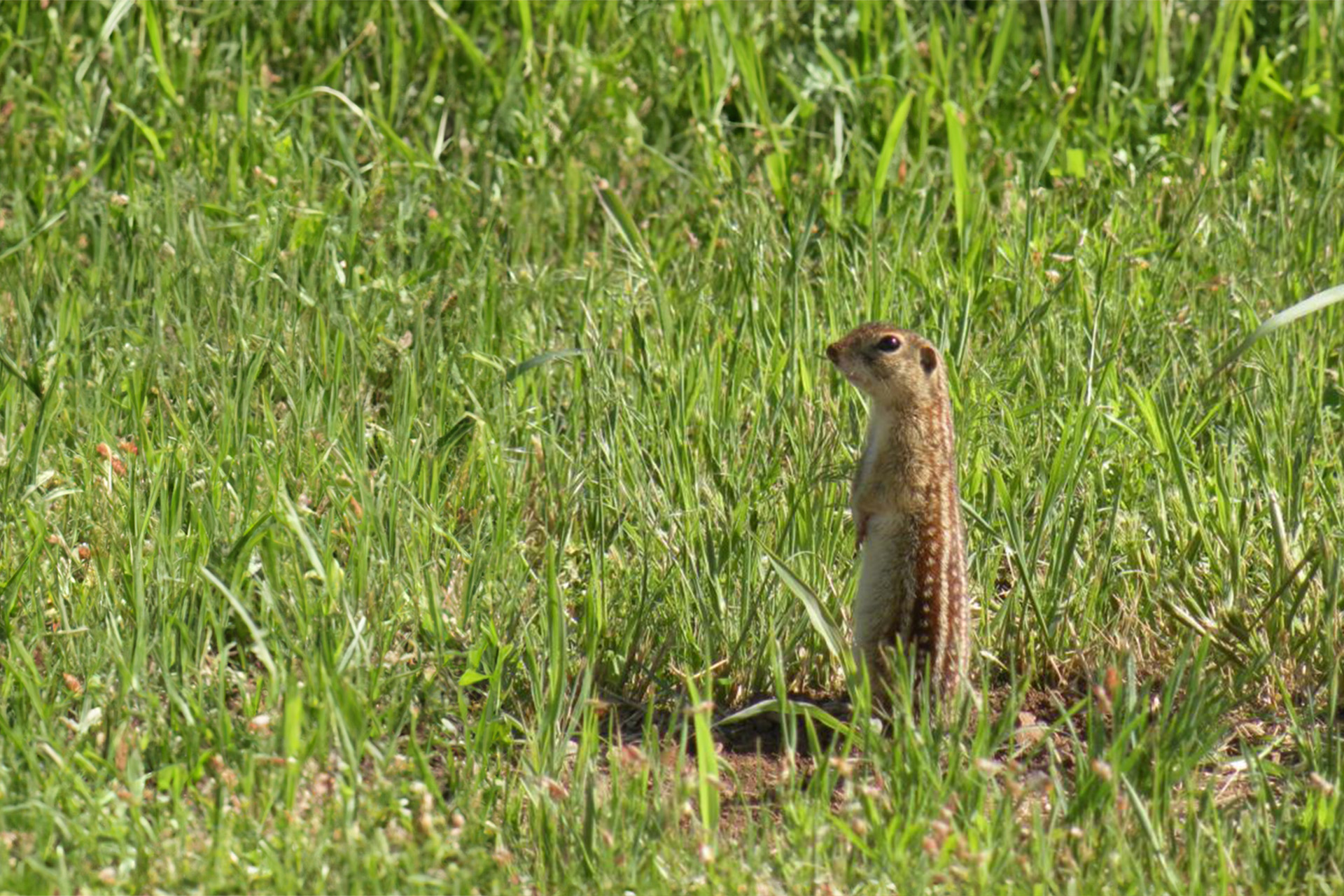How Do Hibernating Squirrels Stay Muscular During Winter?
By Daria Zaitseva

Have you ever wondered how animals like some squirrels, bears, and hedgehogs survive the winter months? Well, they become torpid for up to several months with a minimal demand of food and water [1]. This amazing ability is called hibernation, during which breathing, heartbeat, and most metabolic processes slow down, and body temperature significantly drops to conserve energy. Interestingly, hibernating animals are capable of maintaining their muscle mass without eating, have you ever wondered why?
To address our question, one needs to appreciate that the integrity of various tissues, including muscle, is maintained by a steady supply of amino acids, which are building blocks of proteins. When animals feed normally, the diet is the major source of amino acids. During hibernation, however, animals may turn to breaking down their own tissues in order to obtain a sufficient amount of amino acids to make new proteins for survival. An alternative, “wasteful” route for amino acids involves their degradation into ammonia and then urea in the liver. Urea eventually enters the bloodstream and is excreted in urine. How can hibernating animals minimize such “wasteful” mechanism that may reduce muscle mass?
A recent study showed the gut microbiota of hibernating squirrels may be the key. It was known that urea in the bloodstream can be transported into the gut lumen [2]. There, the gut microbiota can salvage urea by producing ureases to metabolize it back into carbon dioxide and ammonia. The latter is then used by the same microbiota to resynthesize amino acids [3]. Such a mechanism minimize the wastage of amino acids during hibernation. As a result, the squirrels end up with more muscles than before and wake up stronger for the breeding season right after the cold winter [4].
Now, let's turn to its implications for humans [3]. Muscle wasting is a common condition in the elderly suffering from age-related muscle loss and bedridden patients under prolonged inactivity. It is also prevalent in developing countries, as millions of people lack a diet with sufficient protein. Isn’t this condition similar to what we saw in hibernating animals? Yes, you guessed it: We can potentially harness the gut bacteria in the hibernating squirrels to maintain muscle mass in humans.
Human gut microbiota is plastic such that it can be shaped by diet. A classic example is the transfer of beneficial gut bacteria such as Bifidobacterium from mother to infant through breastfeeding [5]. Breast milk also contains human milk oligosaccharides, a prebiotic (or food) for Bifidobacterium, to facilitate the colonization of the bacteria to provide health benefits to infants [6]. In another case to promote healthy growth in undernourished children, scientists have developed microbiota-directed foods to repair their immature gut microbiota by increasing the representation of growth-promoting bacterial taxa [7]. In light of these stories, researchers are now exploring the possibilities of developing oral probiotic supplements to introduce the bacteria that produce ureases such as the genus Alistipes in hibernating squirrels, or genetically designed bacteria to the human gut to promote the breakdown of urea and muscle replenishment [3]. These approaches could be promising in combating muscle wasting by manipulating our gut microbiota.
Hibernation is a fascinating animal behavior that involves many unusual physiological and microbial processes. By studying hibernating animals and the mechanisms of related processes, we may be able to develop new therapies for treating human disease and promoting patients’ quality of life. It might also come in handy in the future for space travel where prolonged inactivity is involved [3]. Who knows?
References
[1] Geiser, F. (2013). Hibernation. Current Biology, 23(5), R188–R193. https://doi.org/10.1016/j.cub.2013.01.062
[2] Walpole, M. E., Schurmann, B. L., Górka, P., Penner, G. B., Loewen, M. E., & Mutsvangwa, T. (2015). Serosal-to-mucosal urea flux across the isolated ruminal epithelium is mediated via urea transporter-B and aquaporins when Holstein calves are abruptly changed to a moderately fermentable diet. Journal of Dairy Science, 98(2), 1204–1213. https://doi.org/10.3168/jds.2014-8757
[3] Sommer, F., & Bäckhed, F. (2022). Staying strong during hibernation. Science, 375(6579), 376–377. https://doi.org/10.1126/science.abn6187
[4] Regan, M. D., Chiang, E., Liu, Y., Tonelli, M., Verdoorn, K. M., Gugel, S. R., Suen, G., Carey, H. V., & Assadi-Porter, F. M. (2022). Nitrogen recycling via gut symbionts increases in ground squirrels over the hibernation season. Science, 375(6579), 460–463. https://doi.org/10.1126/science.abh2950
[5] Soto, A., Martín, V., Jiménez, E., Mader, I., Rodríguez, J. M., & Fernández, L. (2014). Lactobacilli and bifidobacteria in human breast milk: influence of antibiotherapy and other host and clinical factors. Journal of Pediatric Gastroenterology and Nutrition, 59(1), 78–88. https://doi.org/10.1097/MPG.0000000000000347
[6] Taft, D. H., Lewis, Z. T., Nguyen, N., Ho, S., Masarweh, C., Dunne-Castagna, V., Tancredi, D. J., Huda, M. N., Stephensen, C. B., Hinde, K., von Mutius, E., Kirjavainen, P. V., Dalphin, J. C., Lauener, R., Riedler, J., Smilowitz, J. T., German, J. B., Morrow, A. L., & Mills, D. A. (2022). Bifidobacterium Species Colonization in Infancy: A Global Cross-Sectional Comparison by Population History of Breastfeeding. Nutrients, 14(7), 1423. https://doi.org/10.3390/nu14071423
[7] Gehrig, J. L., Venkatesh, S., Chang, H. W., Hibberd, M. C., Kung, V. L., Cheng, J., Chen, R. Y., Subramanian, S., Cowardin, C. A., Meier, M. F., O'Donnell, D., Talcott, M., Spears, L. D., Semenkovich, C. F., Henrissat, B., Giannone, R. J., Hettich, R. L., Ilkayeva, O., Muehlbauer, M., . . . Gordon, J. I. (2019). Effects of microbiota-directed foods in gnotobiotic animals and undernourished children. Science, 365(6449). https://doi.org/10.1126/science.aau4732